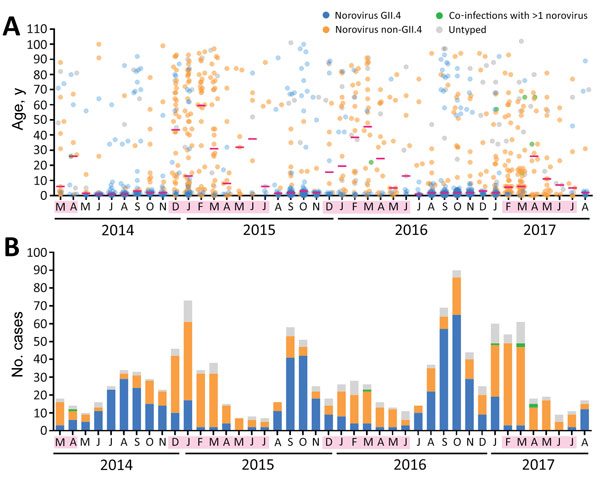Volume 24, Number 4—April 2018
Dispatch
Bimodal Seasonality and Alternating Predominance of Norovirus GII.4 and Non-GII.4, Hong Kong, China, 2014–20171
Figure

Figure. Bimodal seasonality and alternating predominance of norovirus GII.4 and non-GII.4 genotypes in Hong Kong, China, 2014–2017. A) Temporal distribution of ages of patients hospitalized for norovirus gastroenteritis. Each dot represents 1 patient. Red horizontal bars indicate medians. B) Epidemic curve during the study period. All cases shown are stratified by norovirus viral protein 1 genotype. Pink shading along baseline indicates months during which the median age of hospitalized case-patients was >5 years.
1Preliminary results from this study were presented at the 1st International Workshop on Gastroenteritis Viruses, September 14–15, 2017, Shanghai, China.
2Current affiliation: Faculty of Medicine and Dentistry, University of Alberta, Edmonton, Alberta, Canada.